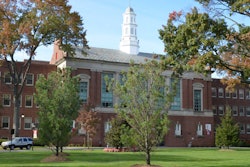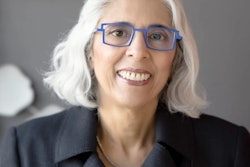Washington
Just what is education reform? National education
standards? Equity of access? Teacher certification? Curriculum
revision? Better governance? Moreover, do we really need to reconstruct
our educational system?
These were concerns and questions considered by a panel of
education experts along with an interactive audience in “Beyond the
Dream X — A Celebration of Black History.” The live videoconference is
an annual Black History Month tradition for Black Issues In Higher
Education.
Before answering the question of whether the American education
system needs reform, the moderator, Andrea Roane — a news anchor at
WUSA-TV in Washington, D.C., and a former teacher — asked
participating just what the word “reform” means.
Dr. Michael Casserly, executive director of the Council of the
Great City Schools, noted that everyone has different definitions of
reform. His fellow panelists proved this point by offering definitions
that ranged from classroom achievement and excellent to improved
accessibility and community involvement — all of which require
reallocating resources and increasing participation by all parties.
“Ultimately, what education reform is about in this country is
getting the institution of public education to work on behalf of kids
and their achievement, and to put their learning as the first
priority,” Casserly said. “It’s about how do we arrange and structure
an institution to do that.”
Dr. Barbara A. Sizemore, dean of the school of education of DePaul
University, added, “Reform means dealing with excellence and equity….
But how you do it is what is under discussion. My view is that it has
to take place in a classroom, because that is where the rubber hits the
road.”
U.S. Congressman Major Owens (D-N.Y.), who participated via
telephone, said he dislikes the word “reform” because it implies that
there is nothing redeeming about the current system. He prefers the
word “improvement” because what is needed, in his view, is an “ongoing
process of change involving governance, management, instruction,
curriculum, and infrastructure. Everything is involved.” Owens is a
member of the House Committee on Education and the Workforce.
Because assessment so often involves testing, Sizemore pointed out that the nation has a love-hate relationship with testing.
“Tests are here to stay,” she said, “because they do what our
culture wants and the best thing we can do for minorities is to help
them pass and score, because it determines who will eat.”
Dr. Yolanda T. Moses, president of the City College of New York/
CUNY, added that “it’s important to know the demographics of students
and make it a part of assessment. There has to be a buy-in to a
national culture of achievement.
“Too often in higher education we have distanced ourselves from the
reform process,” she continued. “We in higher education have a real
role to play as partners in this reform process. We need to look at the
demographics and who the students are in the schools around the country
and address our curriculum to that.”
Dr. Wendy Purifoy, president of Public Education Network — a
national association of education funds in twenty-four states — said
the problem is not testing.
“People can meet that issue and tests can be improved,” she said. “We have to have high expectations.”
Part of the problem with obtaining quality instruction is the acute shortage of teachers, Casserly pointed out.
“We need government help,” he said.
“It is hard to crank out teachers without the help of government,”
Moses concurred. “[Teachers] need extra training to be in urban
classrooms. Urban centers need to be responsive to training our own
teachers because today’s teacher needs to be a bit teacher and a bit
social worker.”
“It’s the human spirit that overcomes obstacles, and we are neglecting that in training our teachers,” said Sizemore.
As an example of the kind of innovation needed to meet the
challenge of training caring teachers for specific environments,
teachers in the audience from Prince George’s County, Maryland, cited a
program at Howard University. The program is designed to attract Black
males to the teaching profession. Some of the teachers, in the midst of
career changes from other professions, were returning to college to
develop their craft.
“There is this mentality out there anybody can teach. But in
reality, it’s a very demanding position,” said Robert “Bud” Spillane,
regional director of the Office of Overseas Schools at the U.S. State
Department and former superintendent of Fairfax County Public Schools
in Virginia. He added that when teacher standards improve, the money
which will attract quality instructors will follow.
As a list of several urban school systems which had been helped by
their local governments was presented to the audience, Purifoy noted
that a good school system is critical to having a democratic society.
COPYRIGHT 1998 Cox, Matthews & Associates
© Copyright 2005 by DiverseEducation.com


















